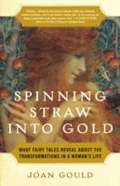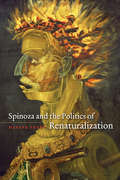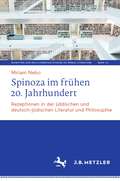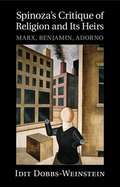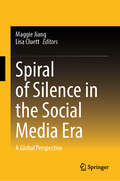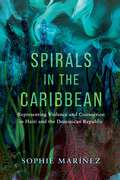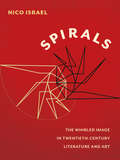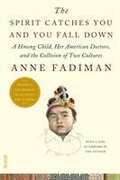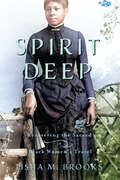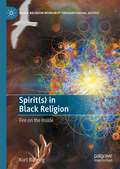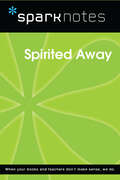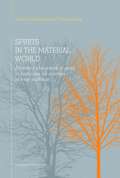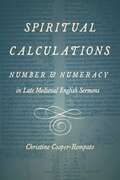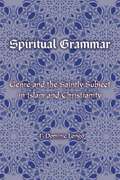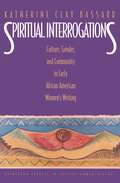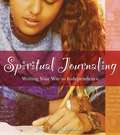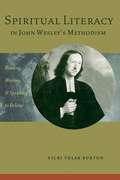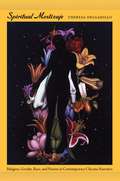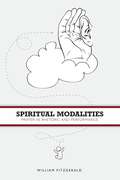- Table View
- List View
Spinning Straw into Gold: What Fairy Tales Reveal About the Transformations in a Woman's Life
by Joan GouldWhat's your favorite fairy tale? Whether it's Cinderella, Beauty and the Beast, Hansel and Gretel or another story, your answer reveals something significant about you, your experiences, and your soul. In this penetrating book, Joan Gould brings to the surface the hidden meanings in fairy tales and myths, and illuminates what they can tell you about the stages in your own life. As Gould explores the transformations that women go through from youth to old age--leaving home and mother, the first experience of sexuality, the surprising ambivalence of marriage, the spiritual work required by menopause and aging--her keen observations will enrich your awareness of your inner life. Full of archetypal figures known to us all, Spinning Straw into Gold also includes stories from the lives of ordinary women that clarify the insights to be gained from the beloved tales that have been handed down from one generation to the next.
Spinoza and the Politics of Renaturalization
by Hasana SharpThere have been many Spinozas over the centuries: atheist, romantic pantheist, great thinker of the multitude, advocate of the liberated individual, and rigorous rationalist. The common thread connecting all of these clashing perspectives is Spinoza’s naturalism, the idea that humanity is part of nature, not above it. In this sophisticated new interpretation of Spinoza’s iconoclastic philosophy, Hasana Sharp draws on his uncompromising naturalism to rethink human agency, ethics, and political practice. Sharp uses Spinoza to outline a practical wisdom of “renaturalization,” showing how ideas, actions, and institutions are never merely products of human intention or design, but outcomes of the complex relationships among natural forces beyond our control. This lack of a metaphysical or moral division between humanity and the rest of nature, Sharp contends, can provide the basis for an ethical and political practice free from the tendency to view ourselves as either gods or beasts. Sharp’s groundbreaking argument critically engages with important contemporary thinkers—including deep ecologists, feminists, and race and critical theorists—making Spinoza and the Politics of Renaturalization vital for a wide range of scholars.
Spinoza im frühen 20. Jahrhundert: Rezeptionen in der jiddischen und deutsch-jüdischen Literatur und Philosophie (Schriften zur Weltliteratur/Studies on World Literature #14)
by Miriam NeboDie breite jüdische Spinoza-Rezeption hatte mit Moses Mendelssohn begonnen und fand in Deutschland im Jahr 1932 mit dem Spinoza-Jubiläum ein Ende. Die jüdische Auseinandersetzung ist Teil der gesamten deutschsprachigen Spinoza-Rezeption, die im 19. Jahrhundert ihren Höhepunkt hatte und zu der neben philosophischen auch literarische Rezeptionen gehörten. Am Ende des 19. Jahrhunderts setzte eine jiddische Spinoza-Rezeption ein. In der Zwischenkriegszeit entstanden eine Reihe von jiddischen Texten, die die Person Baruch Spinozas und seine Theorie thematisierten. Das Buch widmet sich der Untersuchung der Spinoza-Texte von Yankev Shatzky, Melech Ravitch, Avrom Koralnik, Avrom Sutzkever, H. Leivick und Yoysef Tunkler. Ihre Spinoza-Rezeptionen werden mit denen einiger deutsch-jüdischer Autoren und Autorinnen verglichen. Die Analysen der Abhandlung stehen in einem literaturwissenschaftlich-komparatistischen und jiddistischen Kontext, zu dem philosophisch orientierte Perspektiven hinzutreten. Zudem bietet das Buch eine kompakte Darstellung des Rezeptionsthemas ab 1670 (u.a. zu Goethe, Hölderlin, Heine).
Spinoza's Critique of Religion and Its Heirs
by Idit Dobbs-WeinsteinSpinoza's heritage has been occluded by his incorporation into the single, western, philosophical canon formed and enforced by theologico-political condemnation, and his heritage is further occluded by controversies whose secular garb shields their religious origins. By situating Spinoza's thought in a materialist Aristotelian tradition, this book sheds new light on those who inherit Spinoza's thought and its consequences materially and historically rather than metaphysically. By focusing on Marx, Benjamin, and Adorno, Idit Dobbs-Weinstein explores the manner in which Spinoza's radical critique of religion shapes materialist critiques of the philosophy of history. Dobbs-Weinstein argues that two radically opposed notions of temporality and history are at stake for these thinkers, an onto-theological future-oriented one and a political one oriented to the past for the sake of the present or, more precisely, for the sake of actively resisting the persistent barbarism at the heart of culture.
Spinoza's Critique of Religion and Its Heirs: Marx, Benjamin, Adorno
by Idit Dobbs-WeinsteinBy focusing on Marx, Benjamin, and Adorno, Idit Dobbs-Weinstein explores the manner in which Spinoza's radical critique of religion shapes materialist critiques of the philosophy of history.
Spinoza's Ethics
by Benedictus de SpinozaAn authoritative edition of George Eliot's elegant translation of Spinoza's greatest philosophical workIn 1856, Marian Evans completed her translation of Benedict de Spinoza's Ethics while living in Berlin with the philosopher and critic George Henry Lewes. This would have become the first edition of Spinoza's controversial masterpiece in English, but the translation remained unpublished because of a disagreement between Lewes and the publisher. Later that year, Evans turned to fiction writing, and by 1859 she had published her first novel under the pseudonym George Eliot. This splendid edition makes Eliot's translation of the Ethics available to today's readers while also tracing Eliot's deep engagement with Spinoza both before and after she wrote the novels that established her as one of English literature's greatest writers.Clare Carlisle's introduction places the Ethics in its seventeenth-century context and explains its key philosophical claims. She discusses George Eliot's intellectual formation, her interest in Spinoza, the circumstances of her translation of the Ethics, and the influence of Spinoza's ideas on her literary work. Carlisle shows how Eliot drew on Spinoza's radical insights on religion, ethics, and human emotions, and brings to light surprising affinities between Spinoza's austere philosophy and the rich fictional worlds of Eliot's novels.This authoritative edition demonstrates why George Eliot's translation remains one of the most compelling and philosophically astute renderings of Spinoza's Latin text. It includes notes that indicate Eliot's amendments to her manuscript and that discuss her translation decisions alongside more recent English editions.
Spiral of Silence in the Social Media Era: A Global Perspective
by Maggie Jiang Lisa CluettThis book is the first of its kind to apply a global perspective to Elisabeth Noelle-Neumann&’s Spiral of Silence theory within the context of the social media era. Drawing on contributions from scholars across six countries, it offers a comparative analysis of how cultural norms and sociopolitical environments influence individuals' willingness to express their views online and offline. By contextualizing opinion expression through a cross-cultural lens, the volume addresses a significant gap in the literature—namely, the lack of holistic, internationally comparative research on public opinion dynamics in digital spaces. Contributors present the most current observations on factors shaping the "climate of opinion" in their respective national contexts. This approach enables a nuanced exploration of how users engage in or withdraw from public discussions, particularly around sensitive or politically charged issues. In doing so, the book rethinks assumptions about the universal applicability of the Spiral of Silence theory, emphasizing the importance of cultural variation in shaping communication behaviors and decisions. Importantly, the volume also interrogates the role of social media algorithms and emerging AI-driven systems in reinforcing or disrupting these dynamics. Algorithmic curation, recommendation engines, and content moderation tools shape the visibility of viewpoints, subtly influencing users&’ perceptions of dominant opinion climates. These technological infrastructures can amplify majority opinions, suppress minority voices, and exacerbate the psychological mechanisms behind the spiral of silence—often without users being aware of their impact. The interplay of these digital systems with cultural and psychological factors forms a critical new dimension in understanding opinion formation in the 21st century. The book&’s findings are globally relevant, particularly for societies experiencing high levels of migration and cultural diversity. It offers crucial insights into how migrants and culturally diverse communities participate in online public discourse, and whether their contributions are acknowledged or marginalized—an essential consideration for achieving inclusive social cohesion. By unpacking how, when, and why people across different cultural contexts engage in public expression, this book deepens our understanding of the true scope and shape of &‘public opinion&’ in both digital and physical arenas.
Spirals in the Caribbean: Representing Violence and Connection in Haiti and the Dominican Republic
by Sophie MaríñezAn in-depth analysis of literary and cultural productions from Haiti and the Dominican Republic and their diasporasSpirals in the Caribbean responds to key questions elicited by the human rights crisis accelerated in 2013 by the Dominican Constitutional Court’s Ruling 168-13, which denationalized hundreds of thousands of Dominicans of Haitian descent. Spirals details how a paradigm of permanent conflict between the two nations has its roots in reactions to the Haitian Revolution—a conflict between slavers and freedom-seekers—contests over which have been transmitted over generations, repeating with a difference. Anti-Haitian nationalist rhetoric hides this long trajectory. Through the framework of the Spiral, a concept at the core of a Haitian literary aesthetic developed in the 1960s called Spiralism, Sophie Maríñez explores representations of colonial, imperial, and national-era violence. She takes as evidence legislation, private and official letters, oral traditions, collective memories, Afro-indigenous spiritual and musical practices, and works of fiction, plays, and poetry produced across the island and its diasporas from 1791 to 2002.With its emphases on folk tales, responses to the 1937 genocide, the Constitution of the Dominican Republic, Afro-indigenous collective memories, and lesser-known literary works on the genocide of indigenous populations in the Caribbean, Spirals in the Caribbean will attract students, scholars, and general readers alike.
Spirals: The Whirled Image in Twentieth-Century Literature and Art (Modernist Latitudes)
by Nico IsraelIn this elegantly written and beautifully illustrated book, Nico Israel reveals how spirals are at the heart of the most significant literature and visual art of the twentieth century. Juxtaposing the work of writers and artists—including W. B. Yeats and Vladimir Tatlin, James Joyce and Marcel Duchamp, and Samuel Beckett and Robert Smithson—he argues that spirals provide a crucial frame for understanding the mutual involvement of modernity, history, and geopolitics, complicating the spatio-temporal logic of literary and artistic genres and of scholarly disciplines. The book takes the spiral not only as its topic but as its method. Drawing on the writings of Walter Benjamin and Alain Badiou, Israel theorizes a way of reading spirals, responding to their dual-directionality as well as their affective power. The sensations associated with spirals––flying, falling, drowning, being smothered—reflect the anxieties of limits tested or breached, and Israel charts these limits as they widen from the local to the global and recoil back. Chapters mix literary and art history to explore 'pataphysics, Futurism, Vorticism, Dada and Surrealism, "Concentrisme," minimalism, and entropic earth art; a coda considers the work of novelist W. G. Sebald and contemporary artist William Kentridge. In Spirals, Israel offers a refreshingly original approach to the history of modernism and its aftermaths, one that gives modernist studies, comparative literature, and art criticism an important new spin.
Spirit Catches You and You Fall Down: A Hmong Child, Her American Doctors, and the Collision of Two Cultures (FSG Classics)
by Anne FadimanWith a new Afterword from the author…Winner of the National Book Critics Circle Award for Nonfiction. <p><p> This book explores the clash between a small county hospital in California and a refugee family from Laos over the care of Lia Lee, a Hmong child diagnosed with severe epilepsy. <p><p> Lia's parents and her doctors both wanted what was best for Lia, but the lack of understanding between them led to tragedy. Winner of the National Book Critics Circle Award for Nonfiction, the Los Angeles Times Book Prize for Current Interest, and the Salon Book Award, Anne Fadiman's compassionate account of this cultural impasse is literary journalism at its finest.
Spirit Deep: Recovering the Sacred in Black Women's Travel (Studies in Religion and Culture)
by Tisha M. BrooksWhat would it mean for American and African American literary studies if readers took the spirituality and travel of Black women seriously? With Spirit Deep: Recovering the Sacred in Black Women’s Travel, Tisha Brooks addresses this question by focusing on three nineteenth-century Black women writers who merged the spiritual and travel narrative genres: Zilpha Elaw, Amanda Smith, and Nancy Prince. Brooks hereby challenges the divides between religious and literary studies, and between coerced and "free" passages within travel writing studies to reveal meaningful new connections in Black women’s writings. Bringing together both sacred and secular texts, Spirit Deep uncovers an enduring spiritual legacy of movement and power that Black women have claimed for themselves in opposition to the single story of the Black (female) body as captive, monstrous, and strange. Spirit Deep thus addresses the marginalization of Black women from larger conversations about travel writing, demonstrating the continuing impact of their spirituality and movements in our present world.
Spirit Machines
by Robert CrawfordSPIRIT MACHINES, Robert Crawford's fourth collection, attends imaginatively to the fusion of spiritual experience and the insistently material world. In several of the poems, emotional and religious insights merge lyrically with modern technologies of information. The title sequence deals with bereavement and memorializes the poet's father, who died in1997, while the serio-comical catechism of 'A Life-Exam' arises from the experience of hospitalisation. The imaginative, 360-line tour de force 'Impossibility' presents a swirling underwater world imaging the heroic struggle of the nineteenth-century writer and mother, Margaret Oliphant. While some of the poems communicate a sense of hurt and loss, others are insuperably comic, giving the collection an ambitious range and vitality. Throughout the book, Robert Crawford's alert sense of Scotland provides a source and sounding-board for poems -lyrics, ballads, verse narratives and prose poems - that are finely nuanced, moving, and excitingly resourceful.
Spirit and Reason: The Vine Deloria Jr. Reader
by Vine Deloria Jr. Kristen Foehner Barbara Deloria Samuel ScintaA collection of Vine Deloria Jr.'s writings from books, essays, and articles, as well as previously unpublished pieces.
Spirit: Fire on the Inside (Black Religion/Womanist Thought/Social Justice)
by Kurt BuhringIn this book Kurt Buhring explores concepts of spirit(s) within various Black religions as a means to make a constructive theological contribution to contemporary Black theology in regard to ideas of the Holy Spirit, or pneumatology. He argues that there are rich resources within African and African-based religions to develop a more robust notion of the Holy Spirit for contemporary Black liberation theology. In so doing, Buhring offers a pneumatology that understands divine power and presence within humanity and through human action. The theology offered maintains the fundamental claim that God acts as liberator of the oppressed, while also calling for greater human responsibility and capability for bringing about liberation.
Spirited Away (SparkNotes Film Guide)
by SparkNotesSpirited Away (SparkNotes Film Guide) Making the reading experience fun! SparkNotes Film Guides are one-stop guides to great works of film–masterpieces that are the foundations of filmmaking and film studies. Inside each guide you&’ll find thorough, insightful overviews of films from a variety of genres, styles, and time periods. Each film guide contains:Information about the director and the context in which the film was made Thoughtful analysis of major characters Details about themes, motifs, and symbols Explanations of the most important lines of dialogue In-depth discussions about what makes a film so remarkable SparkNotes Film Guides are an invaluable resource for students or anyone who wants to gain a deeper understanding of the great films they know and love.
Spirits in the Material World: Aristotle's Philosophy of Mind, in Particular His Doctrine of Nous Poiêtikos
by Sonia Kamińska-TarkowskaThis book is inspired by the quest for the proper function of Aristotle’s active intellect presented in De Anima 3.5. The urge to grasp its essence has always driven philosophy ahead. Nevertheless, the true nature of nous poiêtikos remains far from being grasped. Author didn't unravel it here either, her aim wass far more modest: to get through the existing interpretations and try to systematise them somehow. To speak in a more poetic, metaphorical way: author aim was to shed some light upon the subject - explore the light metaphor from De Anima 3.5 on many levels. To avoid getting lost in Aristotle and Aristotelian interpretations, Author have divided the readings of nous poiêtikos into mystical and rational ones.
Spiritual Calculations: Number and Numeracy in Late Medieval English Sermons
by Christine Cooper-RompatoMedieval English sermons teem with examples of quantitative reasoning, ranging from the arithmetical to the numerological, and regularly engage with numerical concepts. Examining sermons written in Middle English and Latin, this book reveals that popular English-speaking audiences were encouraged to engage in a wide range of numerate operations in their daily religious practices.Medieval sermonists promoted numeracy as a way for audiences to appreciate divine truth. Their sermons educated audiences in a hybrid form of numerate practice—one that relied on individuals’ pragmatic quantitative reasoning, which, when combined with spiritual interpretations of numbers provided by the preacher, created a deep and rich sense in which number was the best way to approach the sacred mysteries of the world as well as to learn how one could best live as a Christian. Analyzing both published and previously unpublished sermons and sermon cycles, Christine Cooper-Rompato explores the use of numbers, arithmetic, and other mathematical operations to better understand how medieval laypeople used math as a means to connect with God.Spiritual Calculations enhances our understanding of medieval sermons and sheds new light on how receptive audiences were to this sophisticated rhetorical form. It will be welcomed by scholars of Middle English literature, medieval sermon studies, religious experience, and the history of mathematics.
Spiritual Calculations: Number and Numeracy in Late Medieval English Sermons
by Christine Cooper-RompatoMedieval English sermons teem with examples of quantitative reasoning, ranging from the arithmetical to the numerological, and regularly engage with numerical concepts. Examining sermons written in Middle English and Latin, this book reveals that popular English-speaking audiences were encouraged to engage in a wide range of numerate operations in their daily religious practices.Medieval sermonists promoted numeracy as a way for audiences to appreciate divine truth. Their sermons educated audiences in a hybrid form of numerate practice—one that relied on individuals’ pragmatic quantitative reasoning, which, when combined with spiritual interpretations of numbers provided by the preacher, created a deep and rich sense in which number was the best way to approach the sacred mysteries of the world as well as to learn how one could best live as a Christian. Analyzing both published and previously unpublished sermons and sermon cycles, Christine Cooper-Rompato explores the use of numbers, arithmetic, and other mathematical operations to better understand how medieval laypeople used math as a means to connect with God.Spiritual Calculations enhances our understanding of medieval sermons and sheds new light on how receptive audiences were to this sophisticated rhetorical form. It will be welcomed by scholars of Middle English literature, medieval sermon studies, religious experience, and the history of mathematics.
Spiritual Grammar: Genre and the Saintly Subject in Islam and Christianity (Comparative Theology: Thinking Across Traditions)
by F. Dominic LongoSpiritual Grammar identifies a genre of religious literature that until now has not been recognized as such. In this surprising and theoretically nuanced study, F. Dominic Longo reveals how grammatical structures of language addressed in two medieval texts published nearly four centuries apart, from distinct religious traditions, offer a metaphor for how the self is embedded in spiritual reality. Reading The Grammar of Hearts (Nahw al-qulūb) by the great Sufi shaykh and Islamic scholar 'Abd al-Karīm al-Qushayrī (d. 1074) and Moralized Grammar (Donatus moralizatus) by Christian theologian Jean Gerson (d. 1429), Longo reveals how both authors use the rules of language and syntax to advance their pastoral goals. Indeed, grammar provides the two masters with a fresh way of explaining spiritual reality to their pupils and to discipline the souls of their readers in the hopes that their writings would make others adept in the grammar of the heart.
Spiritual Interrogations: Culture, Gender, and Community in Early African American Women's Writing (Princeton Studies in Culture/Power/History)
by Katherine Clay BassardThe late eighteenth century witnessed an influx of black women to the slave-trading ports of the American Northeast. The formation of an early African American community, bound together by shared experiences and spiritual values, owed much to these women's voices. The significance of their writings would be profound for all African Americans' sense of their own identity as a people. Katherine Clay Bassard's book is the first detailed account of pre-Emancipation writings from the period of 1760 to 1863, in light of a developing African American religious culture and emerging free black communities. Her study--which examines the relationship among race, culture, and community--focuses on four women: the poet Phillis Wheatley and poet and essayist Ann Plato, both Congregationalists; and the itinerant preacher Jarena Lee, and Shaker eldress Rebecca Cox Jackson, who, with Lee, had connections with African Methodism. Together, these women drew on what Bassard calls a "spirituals matrix," which transformed existing literary genres to accommodate the spiritual music and sacred rituals tied to the African diaspora. Bassard's important illumination of these writers resurrects their path-breaking work. They were cocreators, with all black women who followed, of African American intellectual life.
Spiritual Journaling: Writing Your Way to Independence
by Julie Tallard JohnsonA guide for teens and young adults on the power of creative journaling and its role in enhancing self-discovery and self-awareness• Provides encouragement for creative writing, self-expression, and self-dialogue• Includes journaling exercises to inspire creativity and cultivate self-esteem• By the author of Teen Psychic and The Thundering Years, winner of the 2002 Independent Publisher Book Award for multicultural juvenile nonfictionMost teens and young adults search for ways to express their individuality and to discover who they are, without being judged. In Spiritual Journaling Julie Tallard Johnson shows that journaling is an informative and supportive outlet for the joys, frustrations, and questions that arise for those making the transition toward their own independent ideas and lives--and a powerful tool for awakening creative potential.Johnson encourages young people to discover their own unique voices by offering guidance on writing and other forms of self-expression and self-dialogue and on learning how to listen to inner wisdom. As readers move through the book and write in their own personal journals, they gain insight about themselves--knowledge reflected in their own words and the writing of other young people included in the book. The journaling tools provided include meditations, consulting oracles, writing poetry, visualizations, writing rituals, and problem solving around spiritual questions.
Spiritual Literacy in John Wesley's Methodism: Reading, Writing, and Speaking to Believe (Studies in Rhetoric and Religion #6)
by Vicki BurtonVicki Tolar Burton argues that John Wesley wanted to make ordinary Methodist men and women readers, writers, and public speakers because he understood the powerful role of language for spiritual formation. His understanding came from his own family and education, from his personal spiritual practices and experiences, and from the evidence he saw in the lives of his followers. By examining the intersections of literacy, rhetoric, and spirituality as they occurred in early British Methodism-and by exploring the meaning of these practices for class and gender-the author provides a new understanding of the method of Methodism.
Spiritual Mestizaje: Religion, Gender, Race, and Nation in Contemporary Chicana Narrative
by Theresa DelgadilloGloria Anzalda's narrative and theoretical innovations, particularly her concept of mestiza consciousness, have influenced critical thinking about colonialism, gender, history, language, religion, sexuality, spirituality, and subjectivity. Yet Anzalda's theory of spiritual mestizaje has not been extensively studied until now. Taking up that task, Theresa Delgadillo reveals spiritual mestizaje as central to the queer feminist Chicana theorist's life and thought, and as a critical framework for interpreting contemporary Chicana literary and visual narratives. First mentioned by Anzalda in her pioneering book Borderlands/La Frontera, spiritual mestizaje is a transformative process of excavating bodily memory to develop a radical, sustained critique of oppression and renew one's relation to the sacred. Delgadillo analyzes the role of spiritual mestizaje in Anzalda's work and in relation to other forms of spirituality and theories of oppression. Illuminating the ways that contemporary Chicana narratives visualize, imagine, and enact Anzalda's theory and method of spiritual mestizaje, Delgadillo interprets novels, memoir, and documentaries. Her critical reading of literary and visual technologies demonstrates how Chicanas challenge normative categories of gender, sexuality, nation, and race by depicting alternative visions of spirituality.
Spiritual Modalities: Prayer as Rhetoric and Performance
by William FitzGeraldA bold recasting of prayer as a rhetorical art, Spiritual Modalities investigates situations, strategies, and performative modes of discourse directed to divine audiences. Examining how prayer “works,” Spiritual Modalities reads prayer’s situations and strategies, its characteristic acts and attitudes, to advance an understanding of prayer as a basic expression of our rhetorical capacities for communication and communion. This groundbreaking analysis demonstrates how prayer draws on fundamental capacities to engage other beings rhetorically to argue that we are never more human than when we address the nonhuman. Spiritual Modalities is notable in its aim to articulate a critical rhetoric of prayer in a secular idiom. It draws on contributions to rhetorical theory from Kenneth Burke along with a broad range of classical and contemporary perspectives on audience, address, speech acts, and modes of performance. The book also takes a multicultural and multimodal approach to prayer as rhetorical performance. The texts and practices of prayer represented range across religious traditions and historical eras and include both verbal and physical modes of divine address. The book will be of interest to scholars researching religious language, Burkean approaches to discourse, practices of memory, and media studies.
